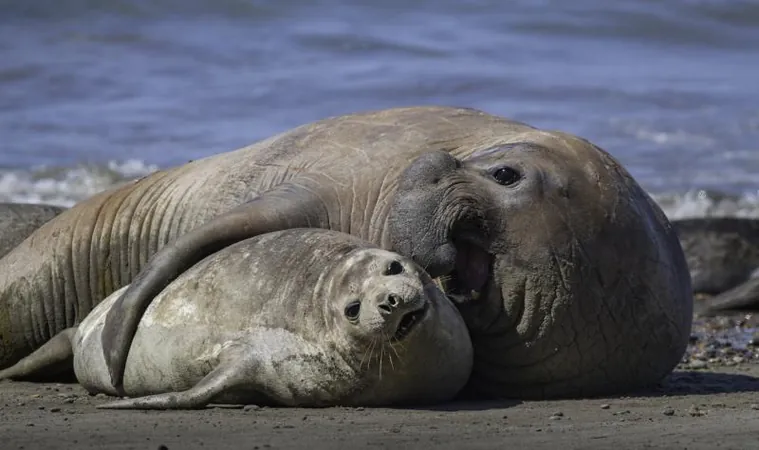
Alarming Avian Flu Outbreaks Decimate Seals and Terns in Unprecedented Events
2024-11-11
Author: Li
Two alarming studies have unveiled catastrophic avian flu outbreaks impacting the elephant seal population in Argentina and terns on islands off the coast of Washington state. These outbreaks have led to a significant decline in animal populations, raising serious concerns among wildlife experts.
Elephant Seal Study
The first study, published in Nature Communications, involved a team of researchers from UC Davis and Argentina's National Institute of Agricultural Technology (INTA). They tracked a colony of elephant seals one year after a devastating outbreak that resulted in the death of over 17,000 seals, including approximately 97% of newborn pups. Emerging evidence from the study suggests that the 2023 outbreak, attributed to the H5N1 virus, spread rapidly amongst marine mammals, causing infections across five southern South American countries.
A noteworthy aspect of the study is that this strain of the H5N1 virus transformed into distinct lineages for avian and marine mammals after affecting the seals. Co-lead author Agustina Rimondi, PhD, highlighted the virus's adaptability, stating, "This virus is capable of adapting to marine mammal species, as we can see from the mutations consistently identified in the viruses within this clade. Alarmingly, our findings suggest that H5 marine mammal viruses can revert to infect birds, underscoring a pressing need for comprehensive surveillance and research collaboration in our region."
The authors pointed out that mass mortality events among seals are extraordinarily rare. They theorize that the elephant seal pups contracted the virus predominantly through direct seal-to-seal contact, likely exacerbated by introductions from sea lions. Given that over half of the elephant seal reproductive population was annihilated during the outbreak, experts estimate it could take decades to restore the population to pre-outbreak levels. More troubling is the likelihood of seals becoming new reservoirs for H5N1, posing a risk of ongoing infections in wild bird populations along coastal regions.
Caspian Tern Study
Compounding the crisis, a second study focused on the Caspian tern breeding colony on Rat Island, Washington. In 2023, an outbreak of highly pathogenic avian influenza led to a staggering 56% mortality rate amongst the tern population. Collaborating researchers from the Washington Department of Fish and Wildlife and Washington State University reported that since the outbreak, no successful breeding has occurred on the island. The death toll included 1,101 adult terns and 520 chicks, alongside 15 harbor seals, a concerning spike in mortality for the usually stable seal population.
These events underline an unsettling trend: the interconnectedness of animal health and the potential consequences of avian influenza outbreaks in wildlife. Researchers warn that increased efforts for monitoring and research are critical to mitigate the risks posed by this evolving virus, which threatens both marine mammal populations and their avian counterparts. As the situation unfolds, wildlife enthusiasts and environmentalists alike are urged to remain vigilant and support scientific research that can help manage and prevent further outbreaks.


 Brasil (PT)
Brasil (PT)
 Canada (EN)
Canada (EN)
 Chile (ES)
Chile (ES)
 España (ES)
España (ES)
 France (FR)
France (FR)
 Hong Kong (EN)
Hong Kong (EN)
 Italia (IT)
Italia (IT)
 日本 (JA)
日本 (JA)
 Magyarország (HU)
Magyarország (HU)
 Norge (NO)
Norge (NO)
 Polska (PL)
Polska (PL)
 Schweiz (DE)
Schweiz (DE)
 Singapore (EN)
Singapore (EN)
 Sverige (SV)
Sverige (SV)
 Suomi (FI)
Suomi (FI)
 Türkiye (TR)
Türkiye (TR)